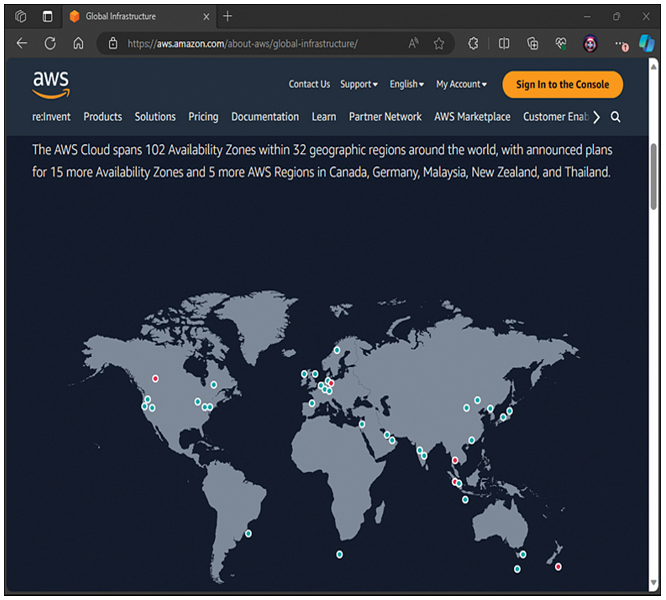Regions
AWS serves over a million active customers in more than 245 countries and territories. Amazon is steadily expanding its global infrastructure to help customers achieve lower latency and higher throughput and to ensure that their data resides only in the Region they specify.
Amazon builds the AWS Cloud infrastructure around Regions and Availability Zones (AZs). A Region is a physical location in the world where there are multiple AZs. Note that a Region, by design, must have at least two or more AZs—and never just one. At the time of this writing, there are 32 Regions around the world and 102 AZs. Note that these numbers are now increasing at a faster rate than ever before.
Figure 12-1 shows the current Regions around the world at the time of this writing.

Figure 12-1 The AWS Global Infrastructure
Each Amazon Region is designed to be completely isolated from the other Amazon Regions. This isolation achieves the highest possible fault tolerance and stability. While each AZ is isolated from a fault tolerance perspective, Amazon connects the AZs within a Region through low-latency links.
To give you a sense for Regions in AWS, examine the details for some of the North American Regions:
US East (Northern Virginia) Region: 6 AZs, launched in 2006
US East (Ohio) Region: 3 AZs, launched in 2016
US West (Oregon) Region: 4 AZs, launched in 2011
US West (Northern California) Region: 3 AZs, launched in 2009
AWS GovCloud (US-West) Region: 3 AZs, launched in 2011
AWS GovCloud (US-East) Region: 3 AZs, launched in 2018
Canada (Central) Region: 3 AZs, launched in 2016
When you reference Regions in your AWS code or at the CLI, you use standardized names created by Amazon for the various Regions. Table 12-2 lists just some of the AWS Regions and their official, standardized AWS names that you need to use when referencing them.
Table 12-2 Some AWS Regions and Their Standard Names
The AWS infrastructure also hosts AWS Edge Locations. AWS CloudFront uses these locations to deliver content at low latency to local clients requesting the data. There are many Edge Locations in North America; in fact, there are too many to list here.
